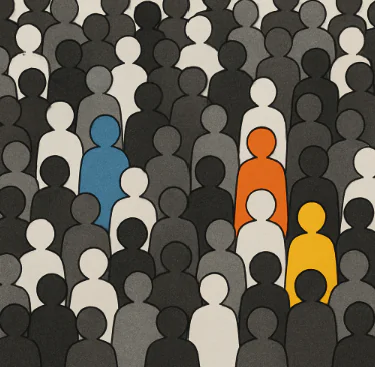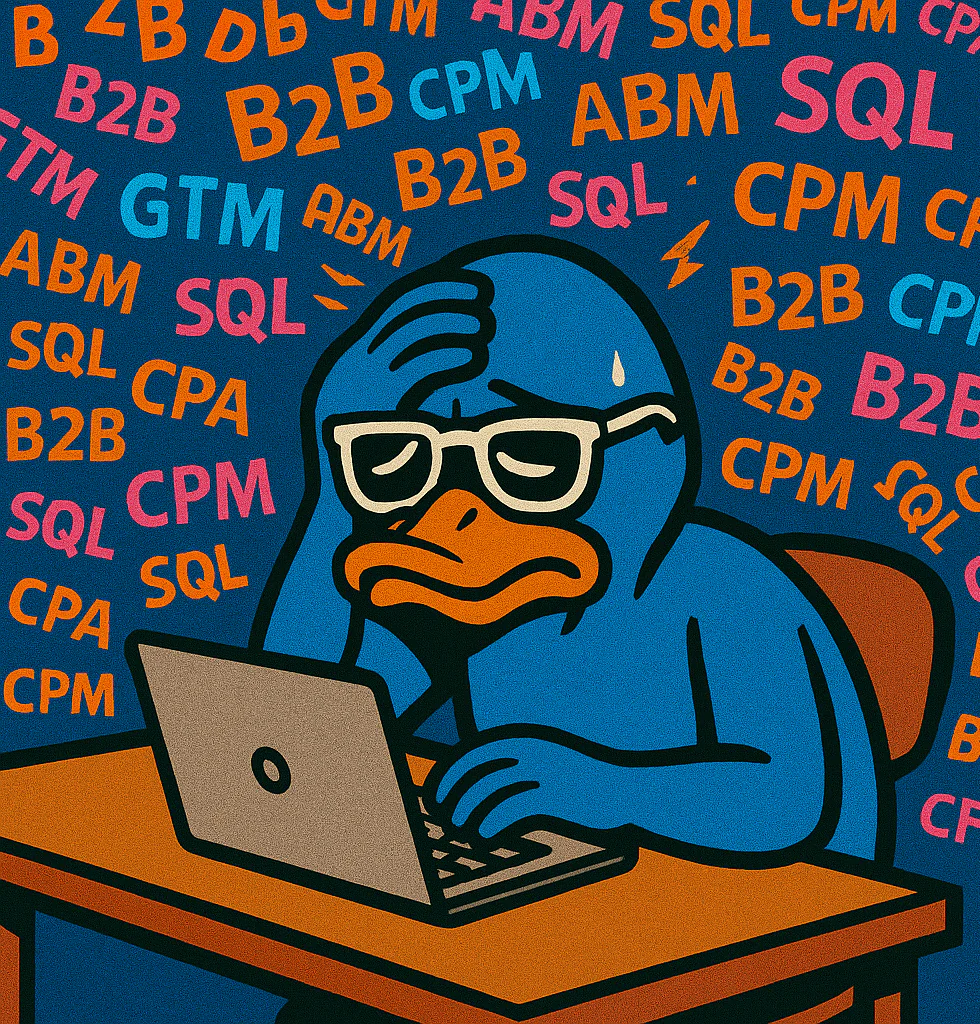What a B2B Marketing Leader Can Do About It to Stay Ahead of the Trends
For B2B demand generation and marketing executives at technology and software companies, driving Let’s just say it out loud: email is no longer the channel that will save your pipeline.
For the last 25 years, B2B marketers have treated email like a Swiss Army knife. Need to nurture leads? Email them. Product update? Email it. Event promotion? Email blast. But we’ve taken the world’s most abused marketing tool and pushed it so far past the edge that it’s starting to look like programmatic display ads circa 2016—cluttered, ignored, and fundamentally untrustworthy.
The data backs it up. Response rates are dropping. Engagement is tanking. Open rates are being manipulated by pixel blockers and iOS privacy updates. Your audience is overwhelmed, and AI is accelerating the collapse.
Here’s the thing: we’re not just watching email die—we’re the ones holding the pillow.
So now what?
If you’re a demand gen leader still counting on email to do the heavy lifting for your pipeline goals, you’re already behind. But the good news? You’ve still got time to evolve. In this post, we’ll break down why email is dying, how we killed it, and most importantly, what to do instead.
1. Email Is Dying — And AI Is Finishing the Job
It’s not a controversial take anymore: email is oversaturated, over abused, and underperforming.
You know it. Your prospects know it. Hell, your own inbox knows it.
The tipping point isn’t just volume—it’s velocity + automation. The explosion of multi-domain sending tools, GPT-powered email generators, and “mass personalization” hacks has led to inboxes flooded with thousands of lookalike messages.
Some B2B buyers are now getting 10x the email volume they saw just 12 months ago.
Ask any sales leader how often their SDRs get flagged for spam these days. Ask any VP of Marketing what their lead nurture performance looks like compared to two years ago. Ask any CIO if they’ve had to implement a domain-wide spam firewall in the last six months.
Spoiler alert: the answer is “yes” across the board.
Even seasoned buyers who want to hear from you are deleting more than they’re opening. And some in the industry are starting to whisper what might have been unthinkable even two years ago:
“Email is becoming the next brand awareness channel.”
Sound familiar? That’s exactly what we said about display ads a decade ago. Once direct-response gold, now mostly useful for vanity metrics and top-of-funnel eyeballs.
If email becomes just another ambient noise channel, what does that mean for demand gen?
It means you need to find new signal—fast.
2. Break the Email Addiction: New Creative Mediums That Work
It’s time to stop relying on email as your primary mode of communication—and start experimenting with channels that are harder to ignore and more human in tone.
Let’s talk text, voice, and micro-events.
Text Messaging
Yes, it’s regulated. Yes, it requires care. But done correctly, SMS and business texting campaigns boast open rates over 90%. You think your nurture emails are getting that?
But here’s the kicker: it forces relevance. You don’t blast SMS the way you blast email. You send sharp, contextual, highly targeted messages that actually provide value.
Text works for:
- Gaining additional insights and intelligence from top of funnel leads
- Hooking a demo request into a meeting faster and more efficiently.
- Delivering high-value insights or links with context
If you’re using it just to spam links, you’re doing it wrong. But if you’re using it as a one-to-one, permissioned signal, it’s a secret weapon.
AI-Powered Outbound Calling
AI voice tech isn’t just for robocalls anymore.
New platforms are enabling scalable, natural-sounding outbound voice calls that can:
- Warm up leads
- Ask qualifying questions
- Route the hottest replies to your SDRs instantly
No, it won’t replace real human outreach. But it can augment it in a way that slices through the inbox chaos and forces engagement.
If you’re not piloting AI voice, you’re behind.
Micro-Events and High-Intent Touchpoints
Let’s not forget the power of live or semi-live interaction. Micro-events—intimate, invite-only roundtables, workshops, and even Slack-based events—are generating conversion rates email marketers would kill for.
These small, controlled environments:
- Drive urgency and exclusivity
- Build authentic buyer-to-buyer conversation
- Convert mid-funnel leads faster than 14-email nurture drips
These channels are harder to scale—but that’s the point. The inbox is infinite. Real attention is not.
3. Stop Thinking B2B. Start Thinking B2H.
B2B buyers aren’t robots sitting in front of corporate inboxes all day. They’re humans—and increasingly, they don’t want to be marketed to at work.
Let’s be real: they’re ignoring email not just because there’s too much of it—but because there’s no real connection to their actual lives.
This is where leading marketers are shifting toward a B2H (Business-to-Human) mindset.
That means understanding:
- Their age, values, and habits
- What they watch, what they listen to
- Where they hang out online (hint: it’s not LinkedIn 100% of the time)
You want to reach the Director of RevOps at a mid-market SaaS company?
Cool. But what else do you know about her? Is she 29 or 49? Is she listening to podcasts during her commute? Is she part of any Slack groups or niche communities? Does she even check her corporate email after 5pm?
Modern targeting means going beyond firmographics and digging into personigraphic
That means building campaigns around:
- Influencer partnerships within specific B2B subcultures
- Contextual content on platforms your ICP actually consumes
- Remarketing across consumer channels they use during non-work hours
If you’re still planning nurture journeys with just “industry + title + company size,” you’re not just behind—you’re invisible.
4. Forget Personalization — Find Relevance
Here’s the mistake nearly every B2B marketing team is making:
They think adding {{FirstName}} and {{CompanyName}} to a subject line equals personalization.
It doesn’t.
You know what does?
- Mentioning a recent funding round they just raised
- Calling out a competitor they’re clearly evaluating
- Tying into an org-wide initiative they just posted about
The future of outbound isn’t about fake familiarity. It’s about undeniable relevance.
And relevance isn’t easy to scrape.
You need tools—and smart ones. AI vendors are emerging that can:
- Identify whether a company is using your competitor
- Detect site behavior and cross-device signals for purchase intent
- Uncover language in earnings calls or press releases that signal strategic shifts
This is deep signal—the kind that tells you why now.
The right data unlocks perfect timing + perfect messaging. And if you get both, you don’t need six email follow-ups.
You just need one message that hits.
Final Word: Email Won’t Save You. So Stop Betting On It.
Look—email isn’t going away completely. It still has a role. But it’s no longer the workhorse channel that will carry your pipeline across the finish line.
The marketers who win in 2025 and beyond aren’t those who “optimize open rates.” They’re the ones who:
- Embrace new outbound channels
- Think human-first, not B2B-only
- Use AI to uncover real buying triggers
- Invest in relevance over spray-and-pray
If email is your #1 pipeline channel, you won’t hit your goals.
It’s time to evolve.
The inbox is dying. Be the signal that rises above the noise.





